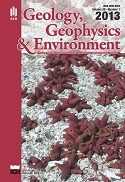Examples of applications of geothermal waters for recreation, heating and bottling in selected regions of Hungary
DOI:
https://doi.org/10.7494/geol.2013.39.1.21Keywords:
Geothermal energy, geothermal water, geothermal recreation, mineral waters, HungaryAbstract
Due to the favourable geothermal conditions in Hungary, where the geothermal gradient is about 1.5 times greater than the world average, the country has numerous centers, which use geothermal waters directly for heating, recreation, or bottling purposes. There are plenty of thermal and mineral water springs, most of which were known even 4000 years ago. This article presents different applications of geothermal waters, illustrated with examples of spas, recreation and balneology centers like the largest spa complexes in Europe - Szechenyi Spa and 500 years old Rudas Spa located in Budapest, Egerszalók with unique travertine deposit or Miscolctapolca in the area of Miskolc where a thermal karstic cave system originally carved and dissolved by the water in karstified Triassic limestone was transformed into a complex of geothermal swimming pools. The dynamic development of the geothermal energy uses system in Veresegyhaz, which total installed thermal capacity is nearly 13 MW with the total track length of 15 km geothermal pipe line, classify the Veresegyhaz as one of the most extended geothermal systems in Hungary.
Downloads
References
Bender T., Kovács I., Gaál J. & Tefner I., 2008. Balneology research in Hungary. Press Therm Climat, 145, 191-200.
Csáki F., Chikán A., Dura G., Horváth Z., Liebe P., Németh T. & Pálmai O. (eds), 2006. Guide. Groundwaters in Hungary II. Ministry for Environment and Water, Budapest.
Directive 2009/54/EC of the European Parliament and of the Council of 18 June 2009 on the exploitation and marketing of natural mineral waters. European Council Directive 80/777/EEC.
Gömör B. & Mészáros G., 2008. History of Hungarian balneology. Press Therm Climat, 145, 181-186.
Gondar-Soregi K., 2012. Hydrology of Bükk Mountains. Field trip guide. SMARAGD-GSH Ltd.
Kele S., Demény A., Siklósy Z., Németh T., Tóth M. & Kovács M.B., 2008. Chemical and stable isotope composition of recent hot-water travertines and associated thermal waters, from Egerszalók, Hungary: Depositional facies and non-equilibrium fractionation. Sedimentary Geology, 211, 3-4, 53-72.
Korcsog A., 2012. Short introduction of the Hungarian natural and medicinal waters, and the bottled water market. IAH-CMTW Meeting Budapest, Hungary, August 12-18 [electronic materials].
Lénárt L., 2010. The interaction of cold and warm karst systems in the Bükk region. Proceedings of the 1st Knowbridge Conference on Renewables. Miskolc, Hungary, September 27-28, 2010,University of Miskolc, Institute of Environmental Management, 109.
List of natural mineral waters recognized by Member States. Official Journal of the European Union 2012/C 83/01.
Mádai F., 2010. Minerals, history and wines - trip to Miskolc, Miskolctapolca and the Bükkalia region. Acta Mineralogica-Petrographica. Field Guide Series, 12, 1-12.
Szita G., 2012. New Direct Heat Geothermal Systems in Hungary. IGA NEWS Newsletter of the International Geothermal Association, 89, 4-5.
Szita G. & Vitai Z., 2012. Geothermal energy utilization system in Veresegyház. IAH-CMTW Meeting Budapest, Hungary, August 12-18 [electronic materials].
Tarlós I., 2012. Budapest, the city of spas. Informational materials. [on-line:] www.spabudapest.hu.
Toth A., 2010. Hungary Country Update 2005-2009. Proceedings World Geothermal Congress 2010, Bali, Indonesia, 25-29 April 2010.
Vízkutató Vízkémia Ltd., 2007. Examination of medicinal water from Egerszalók Spa.
Downloads
Published
Issue
Section
License
Authors have full copyright and property rights to their work. Their copyrights to store the work, duplicate it in printing (as well as in the form of a digital CD recording), to make it available in the digital form, on the Internet and putting into circulation multiplied copies of the work worldwide are unlimited.
The content of the journal is freely available according to the Creative Commons License Attribution 4.0 International (CC BY 4.0)










